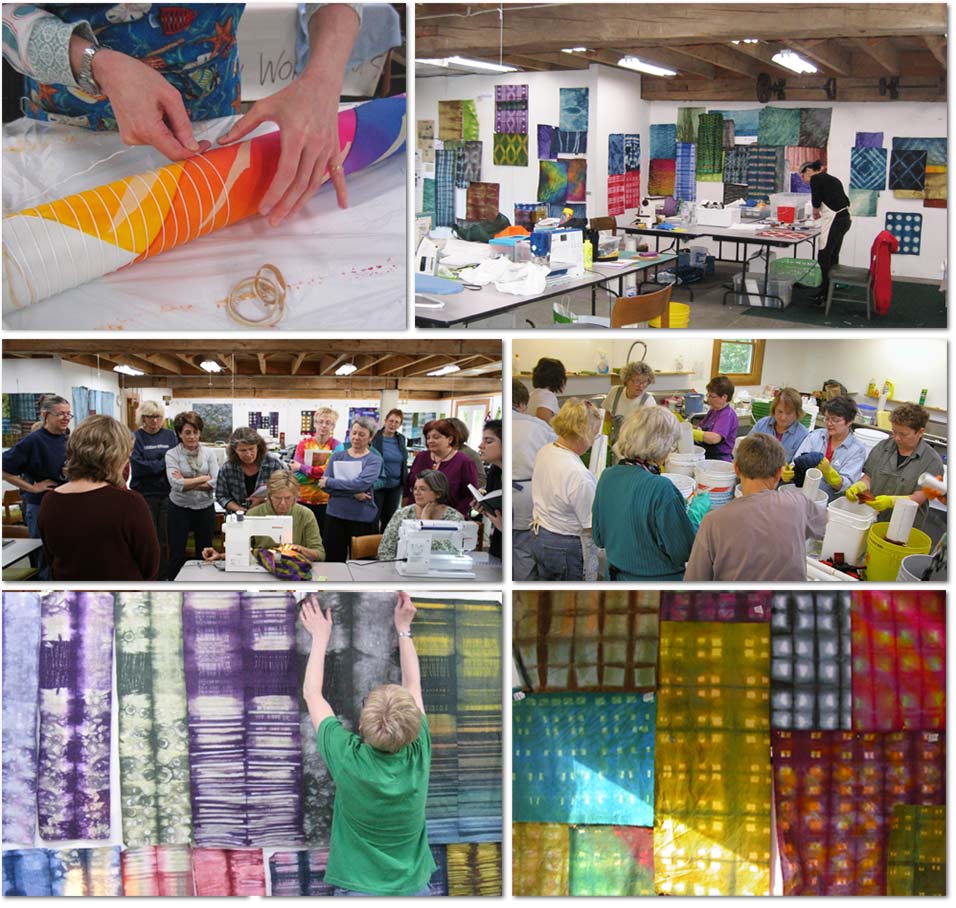 |
||
|
JAN MYERS-NEWBURY
Jan Myers-Newbury is known for her pieced quilts using fabrics hand-dyed with various shibori techniques. She has exhibited and taught nationally and internationally, having been included in thirteen QUILT NATIONAL exhibits. Her work is in the permanent collections of the Museum of Arts and Design, the Minneapolis Institute of the Arts, the Museum of the American Quilters Society and the American Quilt Study Center; nearly 200 quilts are included in corporate and private collections. Her quilt “Depth of Field: A Plane View” was selected as one of the 20th Century’s 100 Best Quilts. Currently her teaching is itinerant and confined to workshops in select locations. She has lived in Pittsburgh since 1987.
|
|
||||
DESCRIPTION
In this workshop participants will be delving into the intriguing and eye-popping graphic possibilities presented by many forms of clamp resist. Create transparencies, converge patterns, play with scale... and always, always, always play with COLOR. Techniques will encompass folding, tying, clamping, stitching and combinations. There will be NO POLES. Once students have quarried possibilities, the challenges of design will begin, and guide further dyeing and compositional decisions.
There will also be the opportunity for independent work; Jan's input will be available.
Please note: that participants will be working with cotton fabric, not silk.
> Please click for supply list
A Pole & a Piece of Fabric
• Dates: October 29-November 2, 2012
• Level: Beginning to Advanced, except those doing independent work need to have previously taken a 5-day workshop with Jan
• Zig Zag Sewing Machine: Optional
• Materials Fee: $25
• Dye Facility Usage Fee: $25
• Tuition & Meal Plan: $845
> Tuition, meal plan, accommodations & additional information
DESCRIPTION
The techniques of arashi shibori (traditional Japanese pole-wrapping) provide hundreds of patterning opportunities; combine these with myriad color possibilities and you have a nearly boundless potential for linear marks. Twisting, turning, pleating, pre-stitching, post-stitching, wrapping with or without string... the possibilities are myriad. Results range from the organic to the architectural. Some techniques are for the time-challenged, others are for the patient. As we delve into the many variations you may choose to tackle the challenges of design with the fabrics created, or you may choose to spend the entire week with your rubber gloves on.
There will also be the opportunity for independent work; Jan's input will be available.
Please note: that participants will be working with cotton fabric, not silk.
> Please click for supply list

